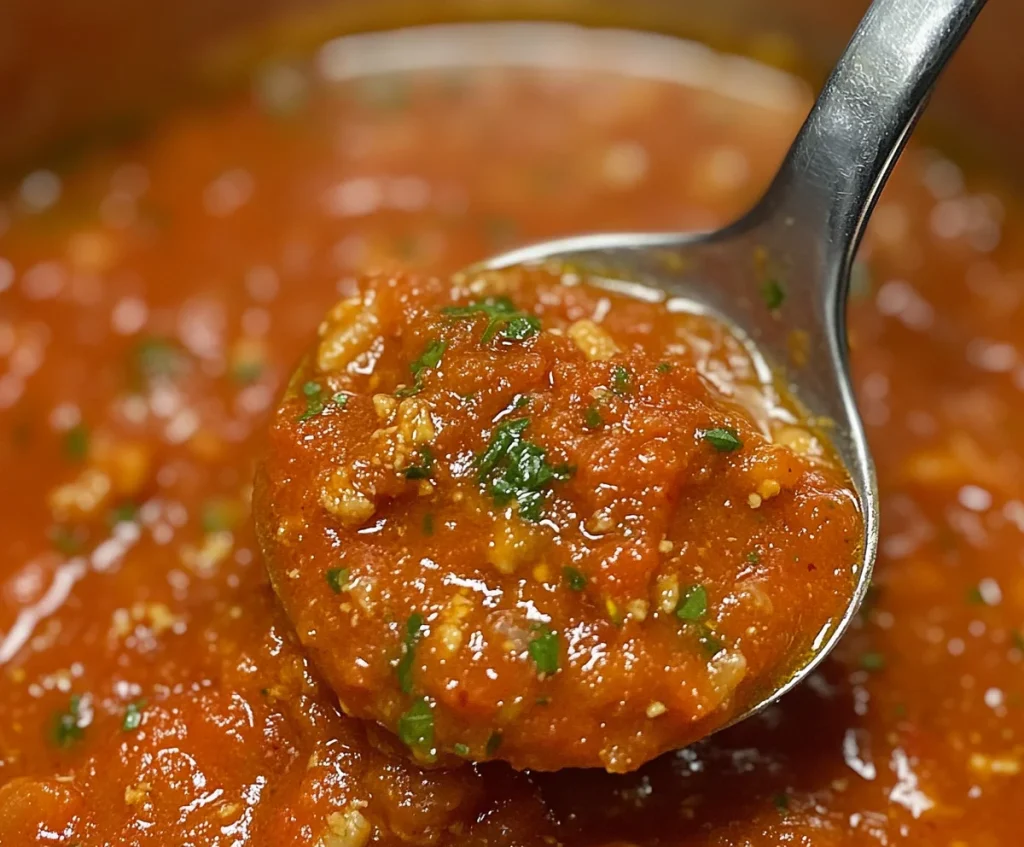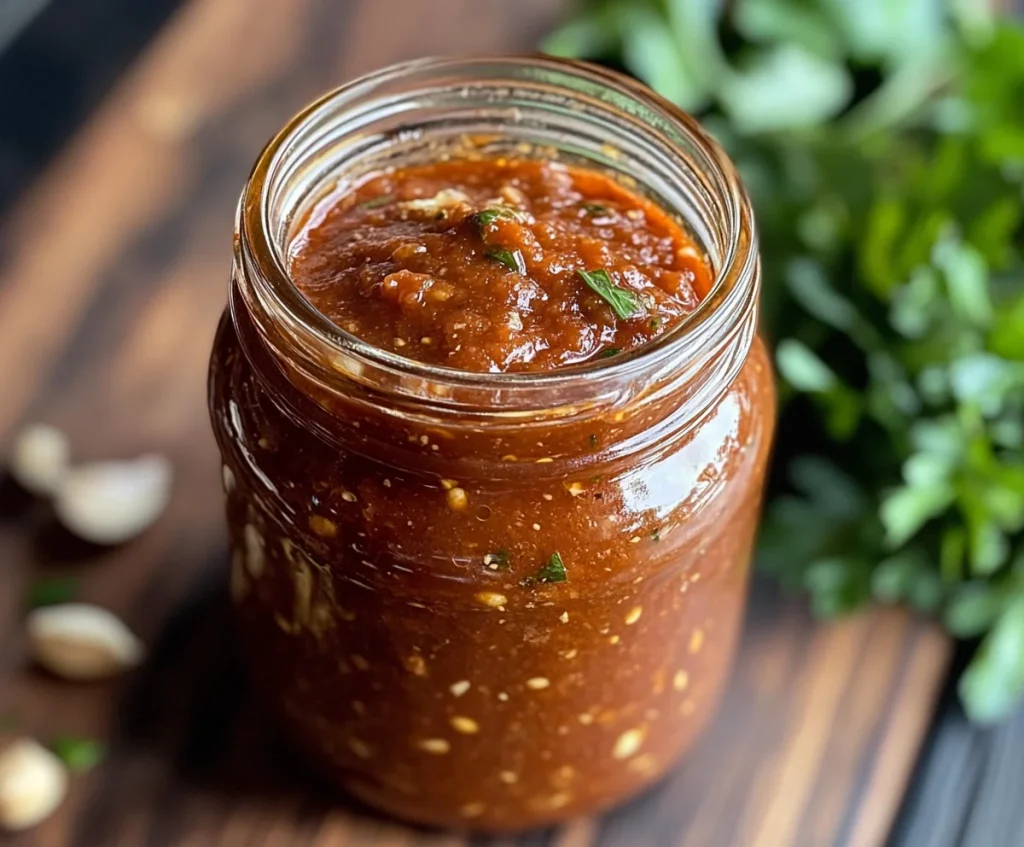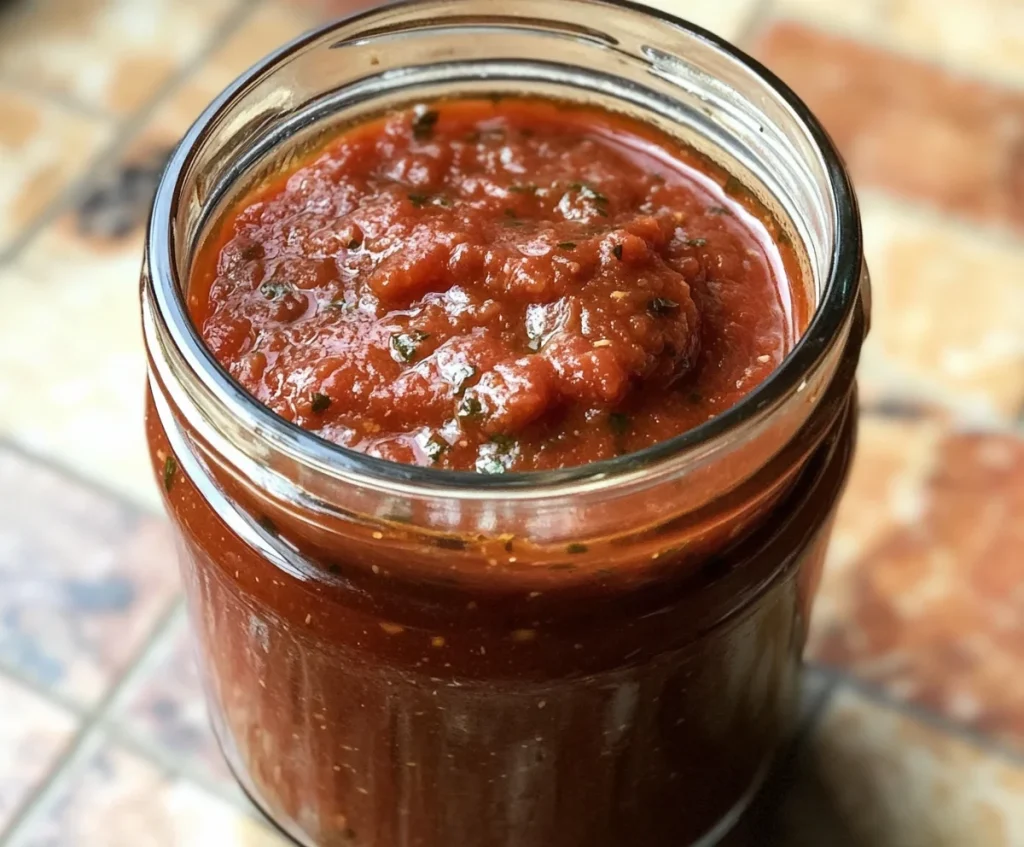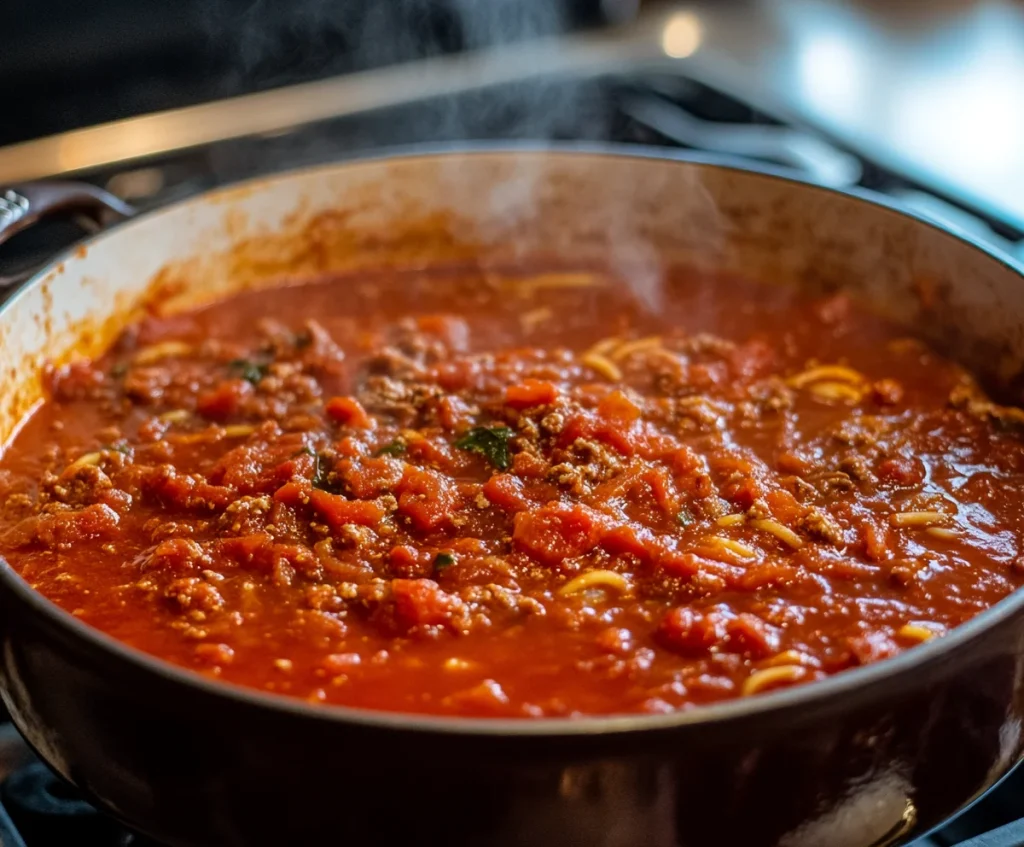Introduction
There’s something incredibly satisfying about a simmering pot of homemade spaghetti sauce filling your kitchen with mouthwatering aromas. It’s a nostalgic experience that transports many of us back to family dinners and special gatherings. Making your own sauce not only allows you to customize flavors but also brings the joy of cooking into your home.
Whether you’re an experienced chef or a beginner, mastering the art of homemade spaghetti sauce can elevate any pasta dish from ordinary to extraordinary. With just a few fresh ingredients and some time on your hands, you can create a rich, flavorful sauce that is completely free from preservatives and additives. Let’s dive into the world of homemade spaghetti sauce and discover how easy it is to craft this culinary delight!
The Benefits of Making Your Own Sauce

Making your own spaghetti sauce is a rewarding experience. It allows you to control the ingredients and flavors. You can customize it to suit your taste preferences perfectly.
Using fresh, high-quality ingredients means better nutrition. You avoid preservatives and artificial additives that are often found in store-bought varieties. This leads to healthier meals for you and your family.
Homemade sauce also offers cost savings over time. Buying bulk or seasonal produce reduces expenses significantly compared to pre-packaged sauces.
Another fantastic benefit is the aroma that fills your kitchen while cooking. The smell of simmering tomatoes, garlic, and herbs creates an inviting atmosphere that’s hard to resist.
Creating a homemade sauce brings a personal touch to family dinners too. It’s a great way to bond with loved ones as everyone enjoys the fruits of their labor together at the table.
Necessary Ingredients and Equipment

To craft a delightful homemade spaghetti sauce, you’ll need some essential ingredients.
| Ingredient | Amount | Calories |
|---|---|---|
| Olive oil | 2 tbsp | 240 kcal |
| Onion (medium) | 1 | 45 kcal |
| Garlic (minced) | 3 cloves | 12 kcal |
| Crushed tomatoes (canned) | 28 oz (1 can) | 160 kcal |
| Tomato paste | 2 tbsp | 30 kcal |
| Fresh basil (optional) | 1/4 cup | 1 kcal |
| Dried oregano | 1 tsp | 3 kcal |
| Salt | 1/2 tsp | 0 kcal |
| Black pepper | 1/4 tsp | 0 kcal |
| Red wine (optional) | 1/4 cup | 50 kcal |
| Sugar (optional) | 1 tsp | 16 kcal |
Total Calories (for the entire recipe): Approximately 557 kcal
Start with ripe tomatoes—fresh or canned will do. Opt for San Marzano varieties if you can find them; they add incredible flavor.
Next, gather aromatics like onions and garlic. These are the backbone of your sauce. Don’t forget fresh herbs such as basil and oregano for that vibrant taste.
For richness, include olive oil and perhaps a splash of red wine to deepen the flavors. A pinch of sugar can help balance acidity too.
As for equipment, having a good chef’s knife is crucial for chopping vegetables. A large pot or Dutch oven will work wonders in simmering your sauce evenly. Additionally, be sure to have a wooden spoon on hand to stir everything together nicely while it cooks down into deliciousness!
Step-by-Step Instructions
Start by heating a generous drizzle of olive oil in a large skillet over medium heat.
Once the oil shimmers, add finely chopped onions and sauté until they turn translucent. This should take about five minutes.
Next, toss in minced garlic and let it cook for an additional minute. Be careful not to burn it; you want that fragrant aroma to fill your kitchen.
Now, pour in crushed tomatoes along with tomato paste for added richness. Stir well to combine everything.
Season with salt, pepper, dried oregano, and fresh basil leaves if you have them on hand. Allow the sauce to simmer gently for at least 20-30 minutes.
As it cooks, stir occasionally and watch as those flavors meld together beautifully.
For extra depth, consider adding a splash of red wine or some sugar to balance acidity if needed.
Tips and Tricks for Enhancing Flavor

To elevate your homemade spaghetti sauce, start with fresh ingredients. Fresh herbs like basil and oregano can make a world of difference. Add them towards the end of cooking for maximum flavor impact.
Don’t shy away from garlic. Sautéing minced garlic in olive oil before adding tomatoes creates a rich base.
Consider incorporating a splash of red wine or balsamic vinegar to deepen the flavor profile. The acidity balances the sweetness of the tomatoes beautifully.
For an umami boost, try adding sautéed mushrooms or even a spoonful of soy sauce. These elements enhance complexity without overpowering traditional flavors.
Don’t forget about seasoning! A pinch of sugar can cut through acidity while salt enhances all those wonderful tastes you’ve built up in your sauce. Taste as you go and adjust accordingly for that perfect finish.
Serving Suggestions and Pairings

Homemade spaghetti sauce is incredibly versatile and can elevate a variety of dishes. Serve it over your favorite pasta, whether it’s classic spaghetti, penne, or even zoodles for a low-carb option. The rich flavors of the sauce meld perfectly with any noodle.
For a heartier meal, consider pairing your sauce with meatballs or sausage. They add depth and texture that complements the vibrant tomato base beautifully.
Don’t overlook sides; garlic bread is a timeless choice that pairs wonderfully. A fresh green salad drizzled with balsamic vinaigrette can also balance the richness of the dish.
For those looking to experiment, try using homemade spaghetti sauce as a pizza topping. It adds an extra layer of flavor that store-bought sauces often lack.
Wine enthusiasts might enjoy serving their dish alongside a glass of Chianti or Sangiovese to enhance the overall dining experience.
Storage and Reheating Instructions

Storing your homemade spaghetti sauce is simple. Once cooled, transfer it to an airtight container. Glass jars or plastic containers work well. Make sure to leave some space at the top, as the sauce may expand when frozen.
For short-term storage, keep it in the fridge for up to a week. If you want it to last longer, consider freezing portions in freezer-safe bags. Lay them flat for easy stacking.
When you’re ready to enjoy your sauce again, reheating is a breeze. Simply thaw overnight in the fridge if frozen. For quick heating, use a microwave or stovetop on low heat until warmed through.
Add a splash of water or broth if you find it too thick after reheating. This helps restore its original consistency and flavor before serving over pasta or using in other dishes.
Conclusion
Homemade spaghetti sauce is more than just a dish; it’s an experience. Crafting your own sauce allows you to explore flavors, aromas, and textures that store-bought options often lack. You have complete control over the ingredients, enabling you to tailor your recipe to fit dietary needs or personal preferences.
With simple steps and readily available ingredients, anyone can whip up a delicious batch of homemade spaghetti sauce. Plus, the satisfaction of creating something from scratch is unmatched. So gather your supplies and dive into this culinary adventure.
Whether you’re serving it with pasta for family dinner or using it as a base for other recipes, homemade spaghetti sauce makes any meal special. Don’t forget about the opportunities for customization and experimentation along the way! Embrace the process—your taste buds will thank you.







